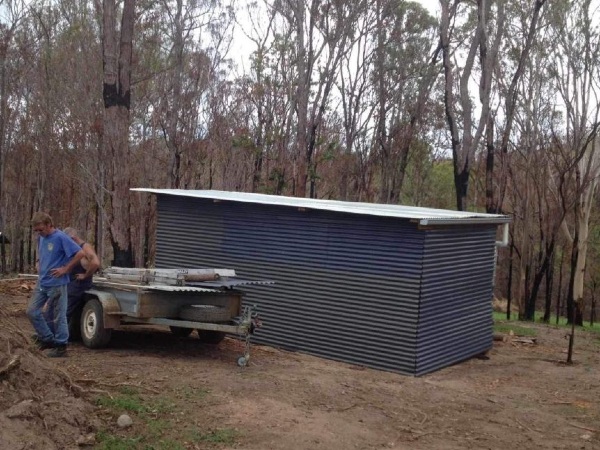Rebuilding A Shed After Bushfire
With recent rains finally extinguishing fires across the state, including the massive Currowan fire which burned from one end of the Shoalhaven to the other, thoughts are turning to rebuilding.
Building (or rebuilding) in a bushfire prone area is often a lengthy process and it can be hard to know where to begin. Whether you need to rebuild a shed or an entire house with outbuildings, here are a few resources that might help you on your way.
When it comes to rebuilding a shed after a bushfire, here’s what you need to know.
What Approval Do I Need To Rebuild A Shed?
According to the NSW Rural Fire Service sheds, fencing and swimming pools are considered ancillary development. Therefore, whether you need bushfire approval or not will depend on how far away your shed will be located from your house. Council regulations still apply.
- Shed located more than 6 metres from house = no construction requirements for bushfire protection
- Shed located within 6 metres of the house = needs to meet the same construction requirements as the bushfire attack level of the house
Constructing your new shed out of Colorbond Steel is one way you can help protect your property.
Is Colorbond Fireproof?
Using Colorbond Steel for your shed, fence, gutters, roof and other areas of your home is one way to help fireproof your home.
Research from the CSIRO found that:
Colorbond is suitable for use even if your property falls into the extreme risk category (BAL-FZ) under the bushfire attack level (BAL) rating scheme. Homes that are compliant with very high and extreme ratings are built to withstand even the most intense bushfires.
Fire Victims Living In Sheds
More than a year on from the devastating bushfires, there are many survivors still living in sheds, caravans and other temporary accommodation on the South Coast of NSW. This week NSW Premier Gladys Berejiklian visited some of the fire-ravaged areas to remind them that they had not been forgotten. More than 500 homes were destroyed in the Eurobodalla Shire, with more than 130 people still living in temporary housing like sheds and eight listed as homeless. While sheds can be classified as liveable sheds, the main objective for those left homeless by bushfires is simply to have a roof over their heads.




